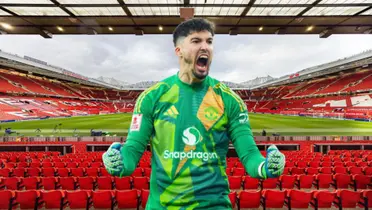How is sustainability transforming the future of english football?
English football goes green: A game changer for sustainability

In the heart of English football, a silent but powerful change is gaining momentum. Beyond the goals and victories, a new environmental awareness is transforming how clubs and fans interact with the king of sports. We, as witnesses and chroniclers of this evolution, observe how sustainability in football is becoming a fundamental pillar for the future of the game.
From iconic stadiums to youth academies, the adoption of sustainable practices is no longer an option, but a necessity. The pressure of regulations, fan demand, and the social responsibility of clubs are converging to create an unstoppable movement. In this article, we will explore how English football is leading the way towards a greener and more responsible future.
Sustainable stadiums: Innovation and clean energy on the playing field
The transformation of stadiums into sustainability centers is one of the most visible aspects of this change. Solar panels that power lighting, rainwater collection systems for lawn irrigation, and waste management programs that minimize environmental impact are just a few examples of the initiatives being implemented.
The Tottenham Hotspur Stadium, for example, has pioneered the adoption of green technologies, with a low-consumption LED lighting system and a comprehensive recycling program. Other clubs, such as Arsenal and Manchester City, are also investing in sustainable infrastructure, demonstrating that football and environmental responsibility can go hand in hand.
Players and clubs: Sustainability ambassadors
Beyond stadiums, players and clubs are taking an active role in promoting sustainability. Awareness campaigns, partnerships with environmental organizations, and educational programs in youth academies are some of the initiatives being carried out.
Players like Héctor Bellerín, known for his environmental activism, are using their platform to inspire others to adopt sustainable practices. Clubs, for their part, are creating programs to educate young people about the importance of caring for the planet, instilling values of environmental responsibility from the ground up.
Football's carbon footprint: Reducing environmental impact
Football's carbon footprint is a topic that increasingly concerns fans and experts. Team travel, stadium energy consumption, and the production of official merchandise are just some of the factors contributing to this footprint.
To reduce their environmental impact, clubs are adopting measures such as carbon offset, promoting sustainable travel for fans, and investing in eco-friendly official merchandise. The Premier League, for its part, has set ambitious goals to reduce the carbon footprint of English football, demonstrating its commitment to sustainability.
The future of football: A commitment to the environment
The future of English football lies in sustainability. The adoption of green technologies in stadium design, the implementation of circular economy models in the football industry, and investment in sustainability projects are some of the keys to achieving a greener and more responsible future.
- Green technology in stadium design.
- Circular economy in the football industry.
- Investment in sustainability projects.
- Fan education and awareness.
- Collaboration between clubs, players, and environmental organizations.
Join the fair play for the planet!
We, as a media outlet, want to invite all fans to join this sustainability movement. Share this article, support clubs and players committed to the environment, and adopt sustainable practices in your daily life. Together, we can build a greener future for English football.
English football has the opportunity to lead the way towards a more sustainable future. The adoption of responsible practices and fan awareness are fundamental to achieving this goal. We, as part of the football community, must assume our responsibility and work together to protect the planet.
What you should know about sustainability in football:
- English football joins the fight against climate change.
- Ecological stadiums: a model to follow.
- Players and clubs: leaders in promoting sustainability.
- Green technology transforms the king of sports.
- A sustainable future for football: an achievable goal.
More news

The Numbers Don't Lie: Casemiro's Dominance Returns
31/03/2025

United's Dream Pairing: The Duo Fans Are Eager to See
31/03/2025

Hojlund's Fate: Will He Stay or Leave Man United?
31/03/2025

Højlund's Plummeting Value: A Cause for Concern at Man United
31/03/2025

Giggs' Misjudgement: Depay's Free-Kick Hopes Fall Flat
31/03/2025

Man United's Summer Clearout: Players on the Chopping Block
31/03/2025

Financial Divide: Man United's Value Dwarfs Olympique Lyon's Squad Cost
30/03/2025

Onana Exit Rumors Swirl: How the Goalkeeper Is Responding
30/03/2025

Eriksen breaks the silence about the rumors of not renewing
30/03/2025

World-Class Player Available: Romano Reveals Transfer Bombshell
30/03/2025

Ugarte's Premier League Insight: Key Differences From Ligue 1 Revealed
30/03/2025

Garnacho Outshines Salah and Haaland: A Stunning Statistical Triumph
29/03/2025

Ekitike's Staggering Stats: Why Man United Are Keen
29/03/2025

Beyond Legends: The United Player Who Rewrote Investment History
29/03/2025

Manchester's Goalkeeping Giants: Who Reigns Supreme?
29/03/2025

Fernandes' Fortune: Unveiling the Price Tag of United's Captain
29/03/2025

The Manchester United jewel that was rumoured for Barcelona ended up in an exotic league
29/03/2025

Father's Faith Pays Off: 100 Pound Bet on Son's United Debut
29/03/2025






